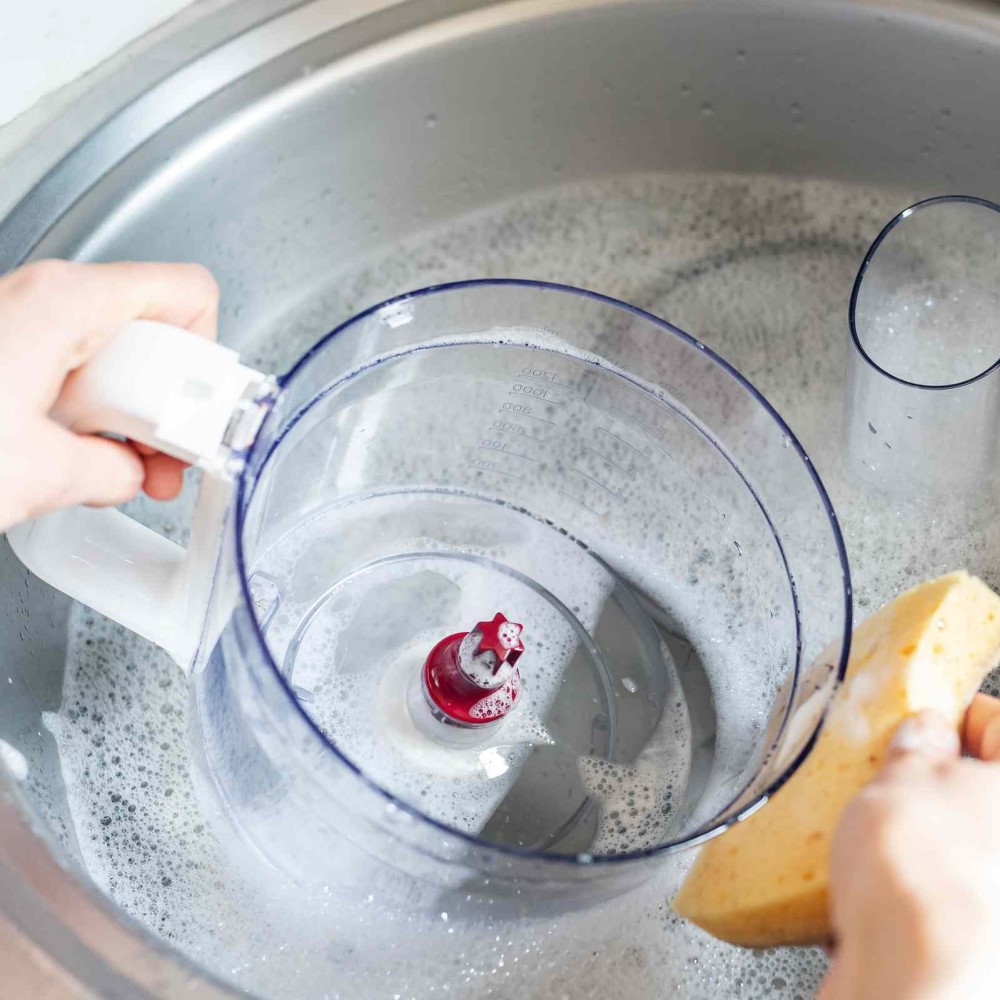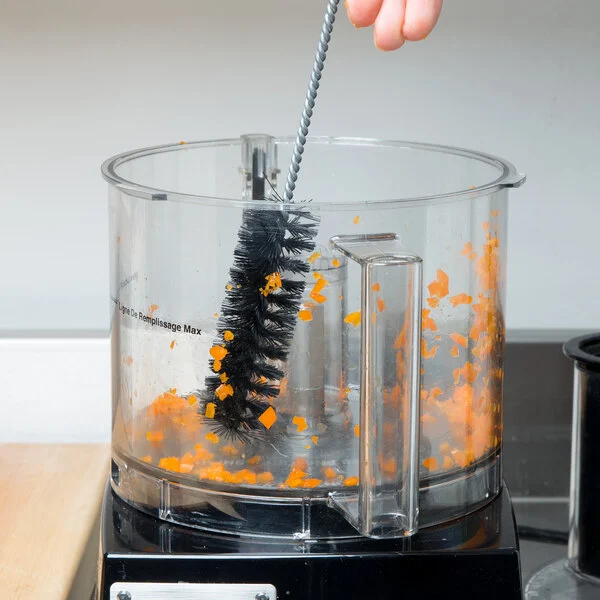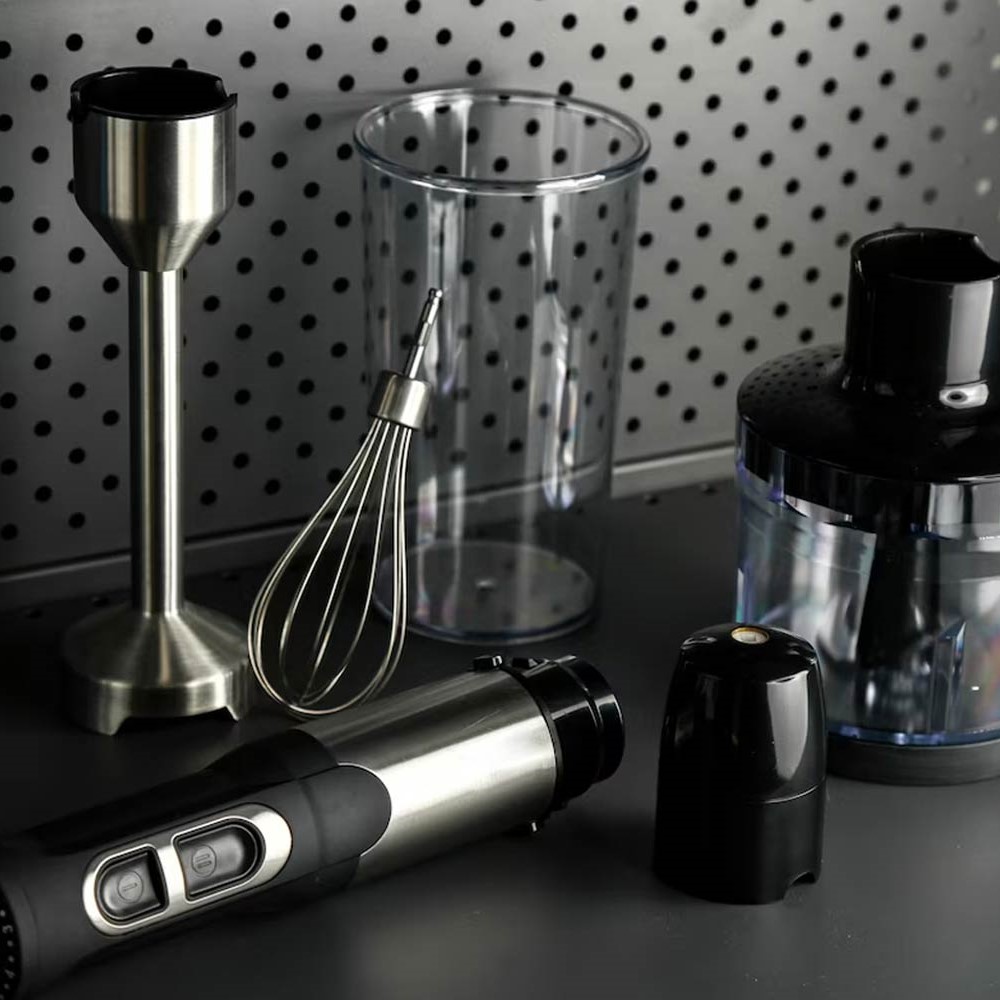
The Importance of Keeping Your Food Processor Clean
Maintaining a clean food processor is crucial for both food safety and appliance longevity. Bits of old food can become a breeding ground for bacteria, and these germs can contaminate your freshly processed foods, posing a health risk. Moreover, food residue can also dull the blades over time, reducing the efficiency of your food processor.

Regular cleaning ensures that your food processor operates at its best. It keeps the blades sharp, and ensures that each component works correctly. A well-maintained appliance is also less likely to malfunction or break down, saving you from potential repair costs or the need to purchase a replacement.
Besides the health and maintenance benefits, a clean food processor also provides a more enjoyable cooking experience. It ensures that the flavors of your ingredients remain true and are not affected by remnants of previous food items. Keeping your appliance clean also demonstrates good kitchen hygiene, which is particularly important if you are preparing food for others.
Lastly, cleaning your food processor regularly can help you stay organized and efficient in the kitchen. When all parts are clean and properly stored, they are easier to find and ready for use, which simplifies your meal prep process.
By integrating ‘how to clean food processor’ techniques into your regular kitchen routine, you’re not only taking care of your appliance but also ensuring that your culinary creations are safe and of the highest quality.
Essential Items for Cleaning a Food Processor
To clean your food processor properly, you need the right tools. Soft sponges or cloths are vital to avoid scratching the surfaces. For tough residues, nylon brushes can get into nooks and crannies without causing damage. Mild dish soap effectively cuts through grease and food particles while being gentle on appliance parts. Ensure you have plenty of warm water; hot water can warp plastic components. A drying towel or rack is useful for air-drying parts after washing. Additionally, having white vinegar or baking soda on hand can help with stubborn stains and odors. Always keep these items within easy reach when you’re set to tackle food processor cleaning.
Remember, it’s important to use tools that are gentle yet effective to maintain the integrity of your food processor components while ensuring a deep clean.
Step-by-Step Guide to Disassembling Your Food Processor
Disassembling your food processor correctly is crucial for a thorough clean. Follow these steps to disassemble your appliance safely before cleaning. Remember, always refer to your specific model’s manual as instructions may vary.
- Power Off: Ensure the food processor is unplugged. This prevents any chance of injury.
- Remove the Lid: Twist off or lift the lid of the food processor. Place it aside.
- Detach the Bowl: Carefully remove the work bowl from the motor base. Some models may require a clockwise or counterclockwise turn for release.
- Take Out Blades: Lift the blades and discs out gently. Handle them with care, as they are sharp.
- Disengage Attachments: If your processor has other attachments, like a dough blade or emulsifying disc, remove them.
- Check No-Fly Zones: Some parts may not be removable. Refer to the manual to confirm.
- Prepare for Cleaning: Place all detachable parts on a countertop, ready to be cleaned.
By disassembling your food processor, you have now prepared it for an effective cleaning session. Next, we will focus on how to clean these components properly.
Tips for Effectively Cleaning Blades and Attachments
Cleaning the blades and attachments of your food processor thoroughly is vital. Here are some tips to help you do it effectively:
- Soak Before Cleaning: If food residue is stuck on, soak the blades and attachments in warm soapy water. This loosens debris.
- Use a Brush: Employ a small brush or an old toothbrush to scrub the nooks and crannies. Be sure to handle blades carefully.
- Rinse Well: After scrubbing, rinse the parts under running water. Ensure all soap is gone.
- Dry Completely: Don’t reassemble while parts are still wet. Use a towel or let them air dry completely to avoid rust.
- Inspect Regularly: Check for dullness or damage. Sharp, intact blades ensure optimal performance.
By following these steps, you will keep the blades and attachments clean, preventing bacteria growth and maintaining their sharpness for efficient food processing.
 Washing and Drying Best Practices for Food Processor Parts
Washing and Drying Best Practices for Food Processor Parts
Proper washing and drying of food processor parts are essential for hygiene and functionality. Here’s how to do it right:
- Use Warm, Soapy Water: Start with a sink of warm water mixed with mild dish soap.
- Gentle Cleaning Tools: Opt for soft sponges or cloths. These protect your parts from scratches while cleaning effectively.
- Brush off Stubborn Residue: For stuck-on food, use a nylon brush. It’s gentle yet tough on grime.
- Thorough Rinsing: Make sure to rinse all the soap off under running water. Leftover suds can cause a filmy residue.
- Careful Drying: Pat parts dry with a clean towel or set them on a drying rack. Air drying reduces the risk of rust on metal components.
- Avoid High Heat: Don’t use a dishwasher’s dry cycle or place parts near heat. This prevents warping and damage.
Adopting these simple washing and drying techniques will keep your food processor parts in top shape. Clean parts contribute to the appliance’s performance and the overall quality of your food prep.
How to Tackle the Food Processor Base and Electric Components
The base of your food processor houses the electric components and requires special attention. To maintain safety and functionality, follow these guidelines:
- Unplug First: Always disconnect the appliance before cleaning.
- Wipe with Care: Use a soft, slightly damp cloth to wipe the base. Avoid water near any openings.
- Tackle Stains Gently: Use a mix of water and mild detergent for stubborn spots.
- Avoid Submersion: Never immerse the base in water.
- Dry Thoroughly: Ensure the base is completely dry before reusing.
For the electric components:
- Check for Debris: Look for any loose crumbs or particles that may interfere with the motor.
- Dust Off: Use a dry brush or cloth to remove dust buildup.
- Keep Vents Clear: Ensure air vents are unblocked for proper cooling.
By caring for the base and electric components, you’ll help prevent malfunctions and extend the lifespan of your food processor.
Reassembling Your Food Processor Correctly After Cleaning
After cleaning your food processor, it’s crucial to reassemble it correctly to ensure it works properly. Start by placing the dry bowl back onto the motor base, making sure it locks into place. Next, insert the blade or disc that you plan to use. Be careful as these parts are sharp. Once the blade is secured, put the lid on top, ensuring that it fits snugly and locks if necessary. Reattach any additional components such as feed tubes or pushers. Before plugging it in, double-check that all parts are dry and correctly assembled. A properly reassembled food processor will perform efficiently and safely during your next food preparation task.
By following these simple steps, you will have your food processor ready to use again with confidence that it is clean, safe, and functional.
 Maintenance: Prolonging the Life of Your Food Processor
Maintenance: Prolonging the Life of Your Food Processor
To extend the lifespan of your food processor, regular maintenance is key. Keeping it clean is just the start. Here are easy steps to ensure your appliance lasts:
- Regular Inspection: Check it often, especially before use. Look for wear or damage on blades and cords.
- Proper Storage: Keep it in a dry place. Store sharp blades safely, away from moisture.
- Blade Sharpening: Dull blades work harder. Sharpen or replace them to maintain efficiency.
- Tighten Loose Parts: Screws can loosen over time. Tighten them to avoid breakdowns.
- Keep It Dry: After washing, dry everything well. Moisture can damage the motor and cause rust.
- Use as Intended: Don’t overload the processor. Follow the manual for proper use.
- Service It Regularly: If it’s acting up, get it serviced. Don’t wait for a total breakdown.
By following these maintenance tips, you’re not just cleaning your food processor; you’re investing in its longevity. Ensure it’s always in top working order for reliable performance in all your food preparation tasks.





